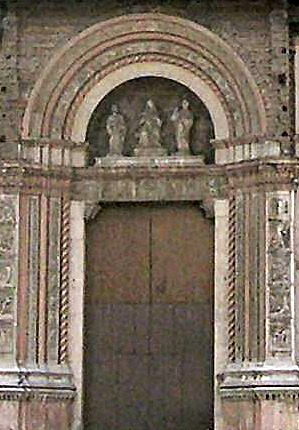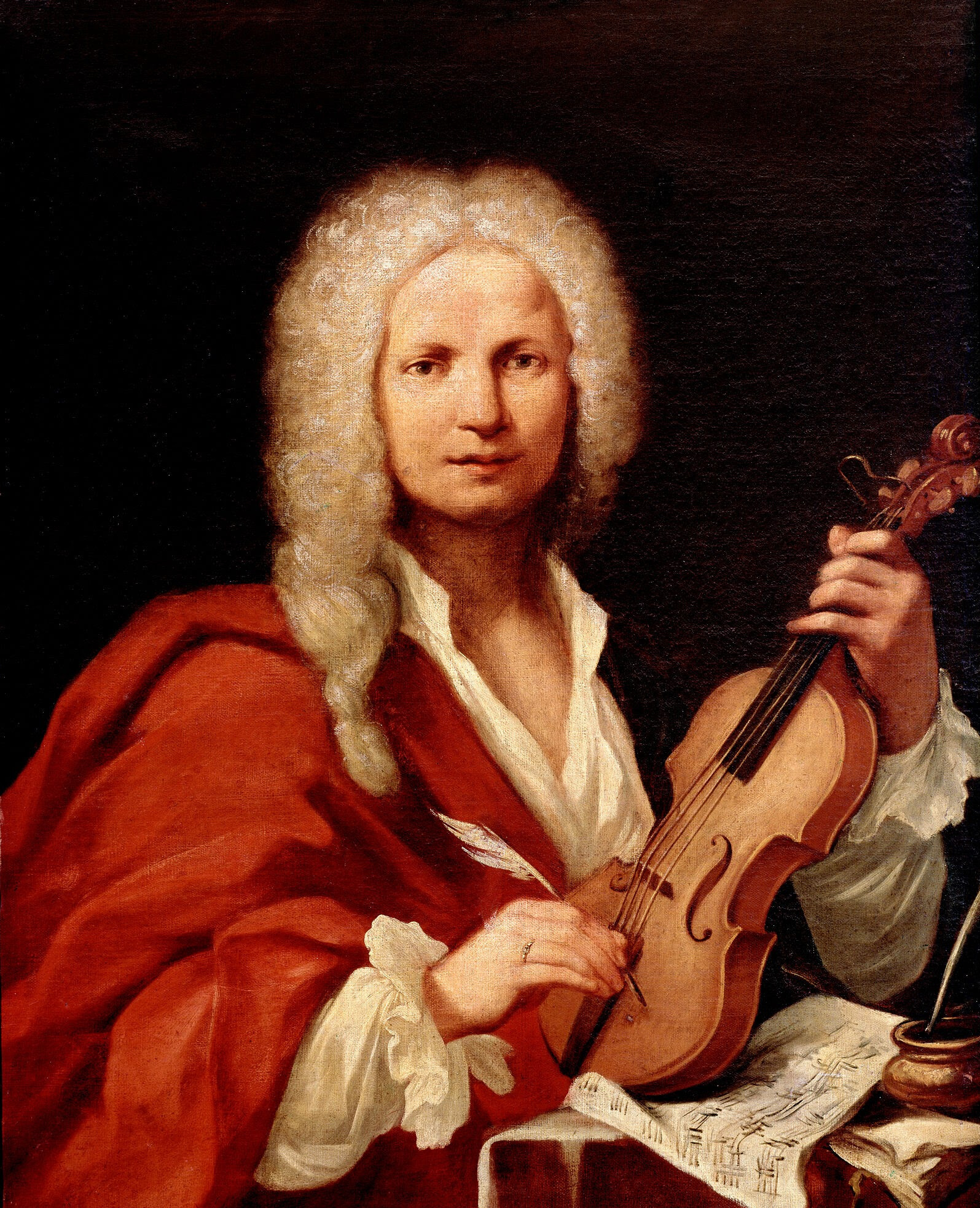|
Giuseppe Matteo Alberti
Giuseppe Matteo Alberti (or Giuseppi) (20 September 1685, in Bologna, Italy – 18 February 1751, in Bologna, Italy) was an Italian Baroque composer and violinist. Life In 1705, he became a member of the Accademia Filarmonica. From 1709, he played the violin in the orchestra of the San Petronio Basilica in Bologna. Later, he was elected a president of the Accademia Filarmonica six times, the first time in 1721. In 1726, he became ''maestro di capella'' of San Giovanni in Monte and in 1734 of San Domenico. Works His works were influenced by Antonio Vivaldi Antonio Lucio Vivaldi (4 March 1678 – 28 July 1741) was an Italian composer, virtuoso violinist and impresario of Baroque music. Regarded as one of the greatest Baroque composers, Vivaldi's influence during his lifetime was widespread ... and they were much played in England. He wrote mostly instrumental works and published 12 symphonies as well as 10 concertos in six parts for violins. List of selected wor ... [...More Info...] [...Related Items...] OR: [Wikipedia] [Google] [Baidu] |
Bologna
Bologna (, , ; egl, label=Emilian language, Emilian, Bulåggna ; lat, Bononia) is the capital and largest city of the Emilia-Romagna region in Northern Italy. It is the seventh most populous city in Italy with about 400,000 inhabitants and 150 different nationalities. Its Metropolitan City of Bologna, metropolitan area is home to more than 1,000,000 people. It is known as the Fat City for its rich cuisine, and the Red City for its Spanish-style red tiled rooftops and, more recently, its leftist politics. It is also called the Learned City because it is home to the oldest University of Bologna, university in the world. Originally Etruscan, the city has been an important urban center for centuries, first under the Etruscans (who called it ''Felsina''), then under the Celts as ''Bona'', later under the Romans (''Bonōnia''), then again in the Middle Ages, as a free municipality and later ''signoria'', when it was among the List of largest European cities in history, largest Euro ... [...More Info...] [...Related Items...] OR: [Wikipedia] [Google] [Baidu] |
Italy
Italy ( it, Italia ), officially the Italian Republic, ) or the Republic of Italy, is a country in Southern Europe. It is located in the middle of the Mediterranean Sea, and its territory largely coincides with the homonymous geographical region. Italy is also considered part of Western Europe, and shares land borders with France, Switzerland, Austria, Slovenia and the enclaved microstates of Vatican City and San Marino. It has a territorial exclave in Switzerland, Campione. Italy covers an area of , with a population of over 60 million. It is the third-most populous member state of the European Union, the sixth-most populous country in Europe, and the tenth-largest country in the continent by land area. Italy's capital and largest city is Rome. Italy was the native place of many civilizations such as the Italic peoples and the Etruscans, while due to its central geographic location in Southern Europe and the Mediterranean, the country has also historically b ... [...More Info...] [...Related Items...] OR: [Wikipedia] [Google] [Baidu] |
Baroque
The Baroque (, ; ) is a style of architecture, music, dance, painting, sculpture, poetry, and other arts that flourished in Europe from the early 17th century until the 1750s. In the territories of the Spanish and Portuguese empires including the Iberian Peninsula it continued, together with new styles, until the first decade of the 19th century. It followed Renaissance art and Mannerism and preceded the Rococo (in the past often referred to as "late Baroque") and Neoclassical styles. It was encouraged by the Catholic Church as a means to counter the simplicity and austerity of Protestant architecture, art, and music, though Lutheran Baroque art developed in parts of Europe as well. The Baroque style used contrast, movement, exuberant detail, deep colour, grandeur, and surprise to achieve a sense of awe. The style began at the start of the 17th century in Rome, then spread rapidly to France, northern Italy, Spain, and Portugal, then to Austria, southern Germany, and Rus ... [...More Info...] [...Related Items...] OR: [Wikipedia] [Google] [Baidu] |
Philharmonic Academy Of Bologna
The Accademia Filarmonica di Bologna ("philharmonic academy of Bologna"; sometimes known in English as the Bologna Academy of Music) is a music education institution in Bologna, Italy. The Accademia de' Filarmonici was founded as an association of musicians in Bologna in 1666 by Vincenzo Maria Carrati. Saint Anthony of Padua was chosen as the patron saint, and an organ with the motto ''Unitate melos'' as the emblem. Through the influence of Pietro Ottoboni, the statute of the academy was approved by Clement XI in 1716. In 1749 the Benedict XIV decreed that the Accademia could award the title of Maestro di cappella. Among the early members of the academy were Giovanni Paolo Colonna (one of the founders of 1666), Arcangelo Corelli (1670), Giacomo Antonio Perti (1688), Giuseppe Maria Jacchini (1688), Giuseppe Maria Orlandini, Antonio Maria Bernacchi (1722), Giovanni Carestini (1726) and the celebrated castrato singer Carlo Farinelli (1730). The composer and teacher Giovanni ... [...More Info...] [...Related Items...] OR: [Wikipedia] [Google] [Baidu] |
San Petronio Basilica
The Basilica of San Petronio is a minor basilica and church of the Archdiocese of Bologna located in Bologna, Emilia Romagna, northern Italy. It dominates Piazza Maggiore. The basilica is dedicated to the patron saint of the city, Saint Petronius, who was the bishop of Bologna in the fifth century. Construction began in 1390 and its main facade has remained unfinished since. The building was transferred from the city to the diocese in 1929; the basilica was finally consecrated in 1954. It has been the seat of the relics of Bologna's patron saint only since 2000; until then they were preserved in the Santo Stefano church of Bologna. History Construction In 1388, the ''Consiglio Generale dei Seicento'' prepared the construction of the church as a civic temple. To make room for the church, the adjacent Curia of Sancti Ambrosii was demolished, together with the majority of one of the city's burgs, including at least eight churches and towers. The first stone of construction ... [...More Info...] [...Related Items...] OR: [Wikipedia] [Google] [Baidu] |
San Giovanni In Monte
San Giovanni in Monte is a 15th-century Roman Catholic church in Bologna, Italy. History The current church can be traced back to a round church from the 5th century known as the Monte Oliveto, traditionally said to be founded by Saint Petronius in 433. The first written mention of the church dates from 1045. In or before 1118, the Canons Regular of the Lateran established a community here, which first restored and enlarged the old church (between ca. 1200 and ca. 1300) and replaced it with a new, late Gothic church (ca. 1450), with a 1474 facade in Renaissance style. The vault was finally finished in 1603. The bell tower is over 40m high. It was finished in the 14th century, with a base dating back to the 13th century. The canons regular were expelled after Napoleon invaded Italy, and some of the artworks from the church were moved to the Louvre. After the defeat of Napoleon, most of the artworks returned, but some were moved to Italian museums instead. In 1824, the floor of t ... [...More Info...] [...Related Items...] OR: [Wikipedia] [Google] [Baidu] |
Antonio Vivaldi
Antonio Lucio Vivaldi (4 March 1678 – 28 July 1741) was an Italian composer, virtuoso violinist and impresario of Baroque music. Regarded as one of the greatest Baroque composers, Vivaldi's influence during his lifetime was widespread across Europe, giving origin to many imitators and admirers. He pioneered many developments in orchestration, violin technique and programatic music. He consolidated the emerging concerto form into a widely accepted and followed idiom, which was paramount in the development of Johann Sebastian Bach's instrumental music. Vivaldi composed many instrumental concertos, for the violin and a variety of other musical instruments, as well as sacred choral works and more than fifty operas. His best-known work is a series of violin concertos known as '' the Four Seasons''. Many of his compositions were written for the all-female music ensemble of the ''Ospedale della Pietà'', a home for abandoned children. Vivaldi had worked as a Catholic p ... [...More Info...] [...Related Items...] OR: [Wikipedia] [Google] [Baidu] |
Musicians From Bologna
A musician is a person who composes, conducts, or performs music. According to the United States Employment Service, "musician" is a general term used to designate one who follows music as a profession. Musicians include songwriters who write both music and lyrics for songs, conductors who direct a musical performance, or performers who perform for an audience. A music performer is generally either a singer who provides vocals or an instrumentalist who plays a musical instrument. Musicians may perform on their own or as part of a group, band or orchestra. Musicians specialize in a musical style, and some musicians play in a variety of different styles depending on cultures and background. A musician who records and releases music can be known as a recording artist. Types Composer A composer is a musician who creates musical compositions. The title is principally used for those who write classical music or film music. Those who write the music for popular songs m ... [...More Info...] [...Related Items...] OR: [Wikipedia] [Google] [Baidu] |
Italian Male Classical Composers
Italian(s) may refer to: * Anything of, from, or related to the people of Italy over the centuries ** Italians, an ethnic group or simply a citizen of the Italian Republic or Italian Kingdom ** Italian language, a Romance language *** Regional Italian, regional variants of the Italian language ** Languages of Italy, languages and dialects spoken in Italy ** Italian culture, cultural features of Italy ** Italian cuisine, traditional foods ** Folklore of Italy, the folklore and urban legends of Italy ** Mythology of Italy, traditional religion and beliefs Other uses * Italian dressing, a vinaigrette-type salad dressing or marinade * Italian or Italian-A, alternative names for the Ping-Pong virus, an extinct computer virus See also * * * Italia (other) * Italic (other) * Italo (other) * The Italian (other) The Italian may refer to: * ''The Italian'' (1915 film), a silent film by Reginald Barker * ''The Italian'' (2005 film), a Russian film ... [...More Info...] [...Related Items...] OR: [Wikipedia] [Google] [Baidu] |
Male Classical Violinists
Male (symbol: ♂) is the sex of an organism that produces the gamete (sex cell) known as sperm, which fuses with the larger female gamete, or ovum, in the process of fertilization. A male organism cannot reproduce sexually without access to at least one ovum from a female, but some organisms can reproduce both sexually and asexually. Most male mammals, including male humans, have a Y chromosome, which codes for the production of larger amounts of testosterone to develop male reproductive organs. Not all species share a common sex-determination system. In most animals, including humans, sex is determined genetically; however, species such as '' Cymothoa exigua'' change sex depending on the number of females present in the vicinity. In humans, the word ''male'' can also be used to refer to gender in the social sense of gender role or gender identity. Overview The existence of separate sexes has evolved independently at different times and in different lineages, an examp ... [...More Info...] [...Related Items...] OR: [Wikipedia] [Google] [Baidu] |






